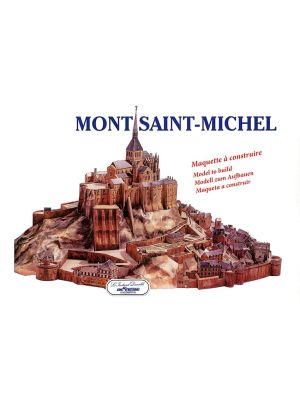Castle Wartburg
Scale: 1/250
Skill Level: difficult
Size (LxWxH): 720x220x210 mm (28x8x8 inch)
Available in 7-12 days
The Wartburg is known far beyond the borders of Germany, and this is certainly not solely due to the time Martin Luther spent there. However, the model by Schreiber is also steeped in history, as it was developed by the master designer Hubert Siegmund. Its pleasing graphics from a time long before computers and CAD still captivate, and constructing the model brings a lot of enjoyment - the precision fit is absolutely convincing.
Angaben zur Produktsicherheit
Hersteller / Manufacturer:
Aue-Verlag GmbH, Korber Str. 20, D-74219 Möckmühl
Kontakt: https://www.schreiber-bogen.de/
| Product type | Papermodel |
|---|---|
| Manufacturer | Schreiber Bogen |
| Scale | 1/250 |
| Designer | Hubert Siegmund |
| Difficulty | difficult |
| Sheet size | 220 x 310 mm |
| Sheets | 17 |
| Parts | 211 |
| Length | 720 mm (28.35 inch) |
| Width | 220 mm (8.66 inch) |
| Height | 210 mm (8.27 inch) |
| Bauanleitung | German, Pictures |
In the 11th century, Landgrave Ludwig of Thuringia ordered the construction of a castle on a 400-meter-high rock near the city of Eisenach. The name of the present-day Wartburg is said to originate from an alleged exclamation by the Landgrave: "Wait, mountain, you shall carry a castle for me!" Since then, the Wartburg served as the seat of the Thuringian court, which in the early 13th century was regarded as a center of chivalric poetry. According to legend, this was the time of the so-called "Sängerkrieg auf der Wartburg" (Minstrels' Contest at Wartburg).
Among the inhabitants of the Wartburg were individuals who played significant roles in history and religion. Elisabeth of Thuringia resided at the Wartburg from 1211 to 1228. Married to Landgrave Ludwig IV, her ascetic lifestyle and dedication to the poor stirred controversy at the noble court, leading to her departure from the castle after her husband's death. Just four years after her passing, she was canonized. Around three hundred years later, Martin Luther sought refuge at the Wartburg. Prior to this, he had been banished and declared an outlaw for his criticisms of the church. Assuming the alias "Junker Jörg," he translated the New Testament from Greek into German during his stay. Luther resided in the bailiwick, now known as the "Lutherhaus" for this reason, and the Luther Room can still be visited today.
Extensive restoration work took place at the Wartburg in the mid to late 19th century and again in the 1950s. Due to numerous additions over the centuries, the Wartburg showcases various architectural styles from the Romanesque, Gothic, and Renaissance periods.
The original layout of the castle can be understood through drawings made by Johann Wolfgang von Goethe during his visit to the Wartburg. The castle was originally designed in a circular shape. In the 14th and 15th centuries, the defensive walkways Margarethengang and Elisabethgang were added onto the former ring wall. The Vogtei (bailiwick) and the Ritterhaus (knight's house) are attached to the Margarethengang. Both buildings date back to the 15th century and are referred to as the outer ward. The central part of the castle stretches from the gatehouse to the large tower, also known as the keep, which was constructed in the 19th century on the foundations of earlier structures.
The main palace from the 12th century is located within the inner ward of the castle. It served as the representative and residential building for the landgraves and is now home to the museum. The inner ward also includes the knight's bathhouse and the guesthouse from the 19th century, as well as the South or Powder Tower from the 14th century.
The elongated, somewhat irregular construction of the Wartburg continues to impress to this day. Ludwig II of Bavaria drew inspiration from the castle when planning the construction of Neuschwanstein Castle in the mid-19th century. In 1999, UNESCO designated the Wartburg as a "World Heritage Site," recognizing not only its diverse architecture but also its significant historical importance.


 Deutsch
Deutsch




















